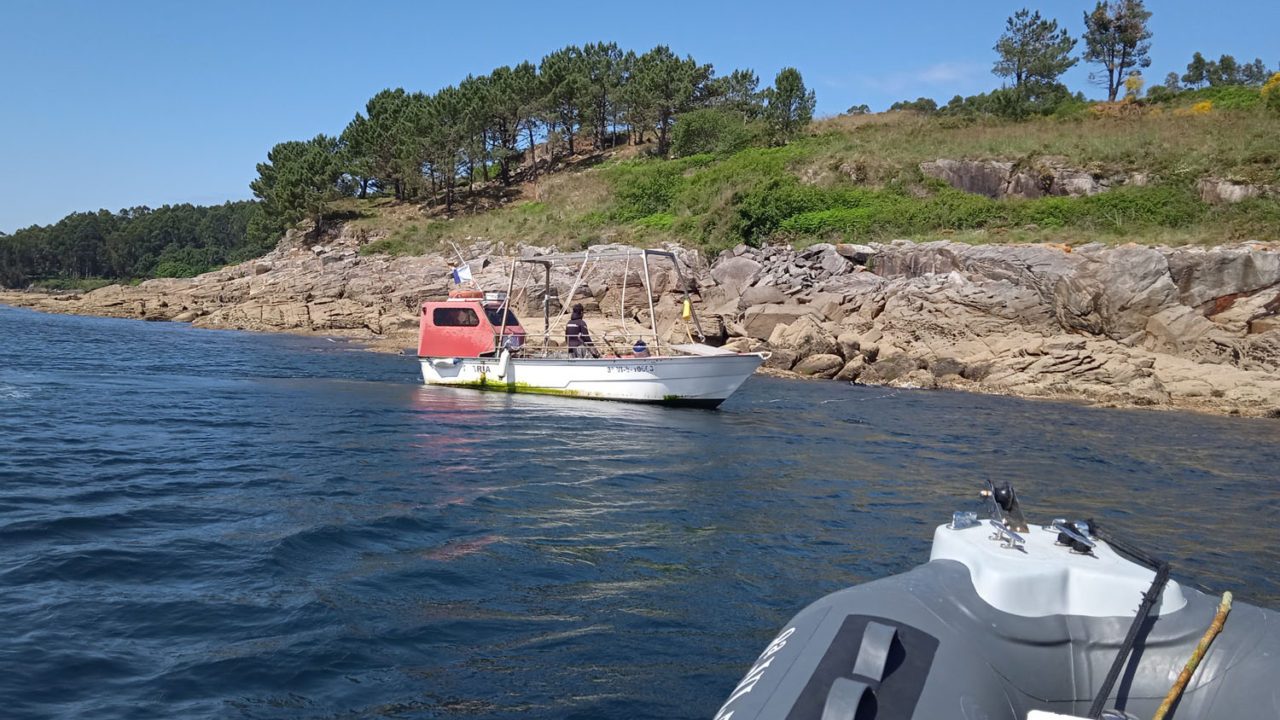Since 2019 larval cultures were carried out and different culture conditions were tested
With an average catch of about 600 tons per year and more than five million euros in sales during 2020, Galicia is currently the largest region in Europe in sea urchin production. France, Germany and Belgium are the main countries to which sea urchins harvested in Galicia are exported. It is in this región where since the end of 2019 the staff of the Marine Research Center of the University of Vigo (CIM-UVigo) leads the Ocimer project, Optimization of the integral culture and restocking methodology of the sea urchin Paracentrotus lividus, funded by the Pleamar program of the Biodiversity Foundation with about 150,000 euros.
The project was launched at the end of 2019 with the overall objective of implementing optimized news culture techniques and methodologies for the repopulation of sea urchins, as well as the recovery of populations in overexploited areas of the Vigo estuary and the associated fishing activity. After almost two years of larval culture and testing different rearing conditions, settlement indicators and diets, the team of researchers, led by the director of ECIMAT José Manuel García Estévez, and in which the expert in cryopreservation and biobanking Estefanía Paréis Rosendo also participates, obtained 29. 000 specimens of the species P. lividus. These speciments were in recent months used to repopulate an area of the coast of Cangas del Morrazo, in the area of exploitation of the fishermen’s guild San Xosé, and in which there was an abundant population of sea urchin, but greatly diminished in recent years. “The repopulation was carried out in two shifts, the first release of 9,000 specimens was carried out in April and the second of 20,000 was made this July,” confirms Noelia Tourón, the technician responsible for the Ocimer project, who anticipates a new repopulation at the end of the year.
Technological innovation and new techniques for the identification of sea urchin releases
The repopulation methodologies developed under Ocimer with the aim of recovering the natural sea urchin banks require, according to the project leaders, technological innovation, as well as the implementation of new techniques for the individual identification of the urchins released into the natural environment, which allow monitoring aspects such as the growth of the released specimens, their behavior, movements, population dynamics, etc., and thus make it possible to verify the success of the repopulation carried out in a given habitat.
“The individual marking/identification mechanism of the released specimens must be easily distinguishable, have a high retention rate and a minimum impact both on survival and on the growth of the released hedgehogs and their behavior,” says Noelia Tourón, who confirms that under the project different experiments were carried out on the marking of P. lividus, both in captivity and in the wild, obtaining good results with one of the specific tags. After the repopulations carried out in April and July, the technician in charge of the project confirms that periodical dives will be carried out to monitor the evolution of the coastal population where the juvenile specimens were introduced and thus evaluate their development and integration into the ecosystem.
Ocimer will end in November 2021, after two years of activity, although those responsible for the project requested an extension of eight months to the Fundación Biodiversidad in order to extend the monitoring period of the repopulations carried out and to implement other complementary activities. During the running-in period of the project, Tourón thanks “the CIM-ECIMAT staff for their support, the San Xosé de Cangas fishermen’s guild for their participation in the work of marking and repopulating the sea urchins and the Galician Atlantic Islands National Park for their collaboration with the project”, she explains
Fonte: DUVI






